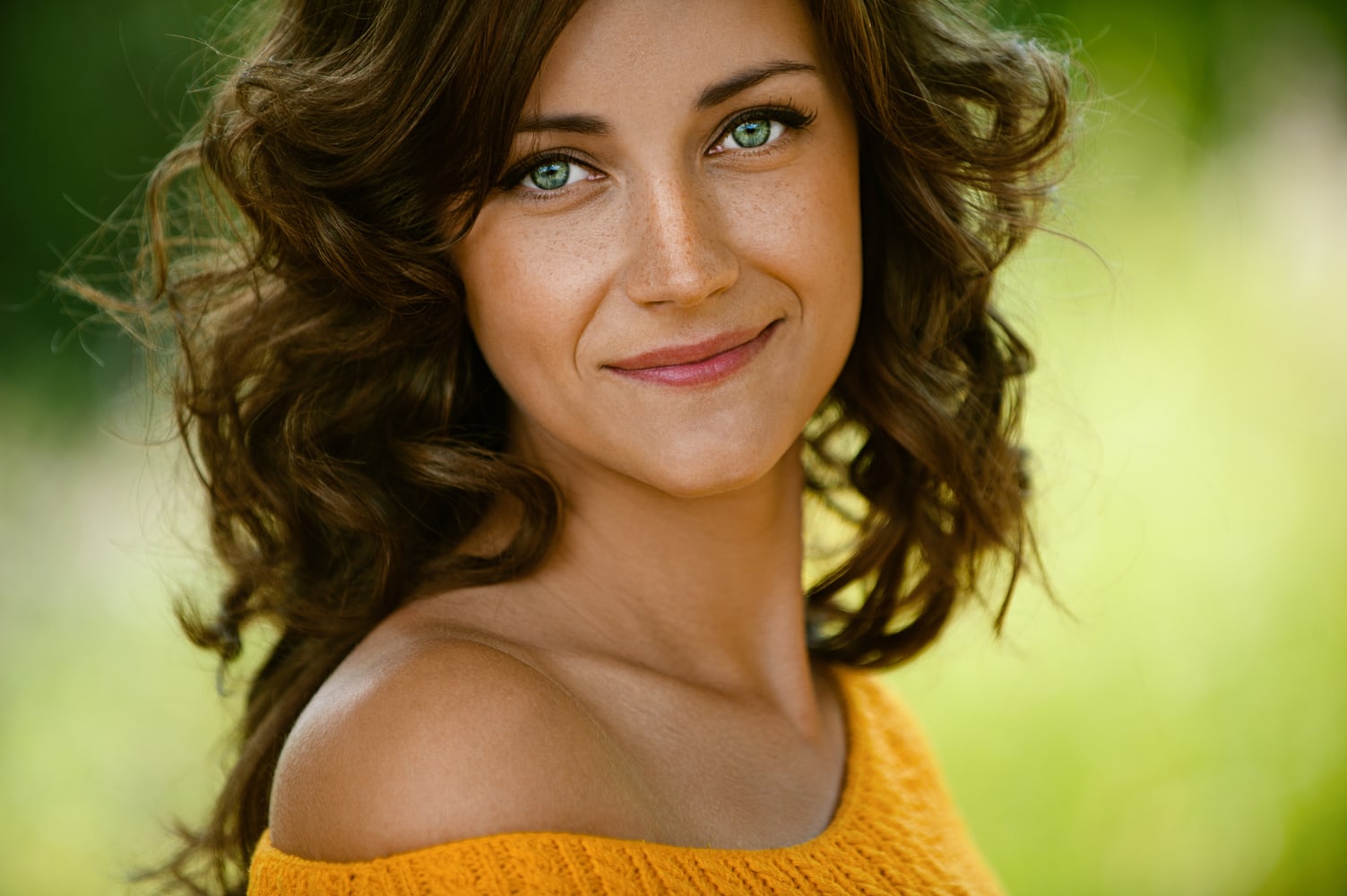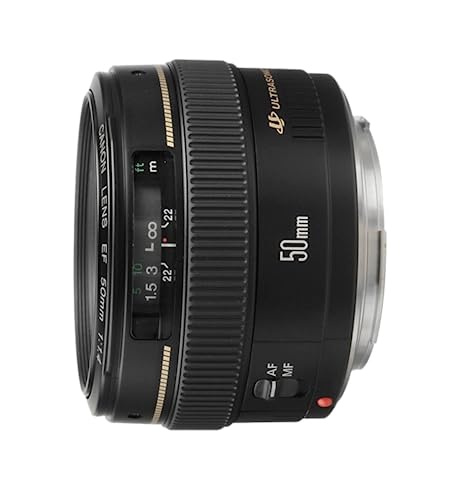Are you unsure of what lenses to use for portrait photography when you first pick up a camera, either as a hobby or a start to a career? Here we will detail the best focal length for portraits to help you make the right choice and take beautiful portraits.
The Short Answer is:
The best focal length for portrait photography is 50mm, 85mm, 135mm, and 200mm. Each length produces stunning portraits and offers unique benefits for beginner to pro portrait photographers. These lengths create the right depth of field. They also have the right aperture to enhance your portraits.
But, if you want to dig a bit deeper, keep on reading
Portrait photography is a great starting point when learning to use a professional camera, but you will quickly learn that using any lens won’t always produce the desired results. You need to choose the right focal length to capture the subject correctly.
What Is Focal Length?
Before you even begin looking at the lenses to use, you may be wondering what the focal length is and how it will affect your images.
Focal length can get quite technical, so to put it simply, it is the distance of the optical center of the lens from the sensor of the camera. This is the physical distance from the piece within the lens to the piece within the camera.
The focal length is basically how much of a scene the camera will capture. If you have a fixed focal length lens, then you won’t be able to zoom using the lens. However, certain lenses have a focal range, which means they can zoom between certain distances.
Lenses are named by their focal length and this is why you will see 50mm lenses or an 18-35mm lens amongst many others.
You can also find the focal length on the front ring of the lens. This length is a property of the lens itself and has nothing to do with the properties of your camera.
The various focal lengths open up a new world of possibilities with your camera, as you can change your lenses whenever you want to capture a scene differently.
However, they do create some complications for new photographers. This is because you need to learn which focal lengths are best for different types of photography, such as portrait photography.
What Is The Best Focal Length For Portraits?
To answer your question, it is not simply one focal length that works in portrait photography. Rather, there are four main focal lengths that portrait photographers use. Each one offers its strengths and weaknesses.
Often, when starting, amateur photographers outgrow the kit lens that comes standard with most cameras. While this lens is great to start with, you will outgrow it at some point.
If your interests are moving toward portrait images, then the four lenses you should consider are 50mm, 85mm, 135mm, and 200mm.
You should determine the right one for your needs at the moment and slowly increase your lens collection as your skills improve. Since each lens offers unique abilities for your photography.
The Humble 50mm
Many beginner photographers are drawn to a 50mm lens when they decide to move on from their kit lens. This is in some part due to the low price of the lens. Most importantly, the lens is a superb piece of equipment to have.
When choosing the right 50mm lens, you can opt for something like a Canon EF 50mm f/1.8, which is the cheaper option, or a Canon EF 50mm f/1.4 which is a bit pricier.
The main difference between these two options is the aperture, which is shown by the f-stop number. The f/1.4 model will allow you to take images in lower light conditions, while the f/1.8 will still give a shallow depth of field.
These lenses are great for blurring out background elements, giving you more room to focus on the person in your photograph without less important objects distracting the image.
The 50mm lenses are well-suited for full-length portraits or waist-level shots whether you are in a studio or out on location. The lens also provides a wide field of view without you needing to be too far away from your subject.
If you are aiming for close-up portraits, then the 50mm lens is not a good choice as it can easily distort the image and create an unflattering portrait.
A Safe 85mm

If you are looking for a more versatile option, then the 85mm lens is a good choice to have as it is more suitable for close-up and full-length portraits. This lens will also allow you to get up close to your subject, without needing to stand on top of them.
This lets you capture high-quality close-ups while letting your subject feel comfortable enough to pose naturally.
Lenses such as this Canon EF 85mm f/1.8 are a great option to try and these lenses often come in an f/1.8 option as well as an f/1.4 option, with the latter being more expensive.
The wide fixed aperture is perfect for your portrait shots to blur out the background and focus on your subject.
The Intermediate 135mm

A focal length of 135mm is good for portraiture photography as you become more skilled at taking photos. These lenses are more expensive than the first two options when choosing the fixed focal length and wide aperture.
You will normally find these fixed focal length lenses with an aperture of f/1.8 or f/2, such as this, Samyang 135mm f/2.0 which offers a good depth of field for the longer focal length.
The longer focal length provides the benefit of being able to shoot portraits from full-length to close-up portraits by simply moving closer or further away from the subject.
The extra benefit of the longer focal length is the ability to stand further away from your subject, giving them more space to feel comfortable.
The long focal length also provides a narrow depth of field and aesthetically pleasing bokeh even when standing at a distance.
The weakness of this lens is that it is often too long to be used in the studio and if you are not careful with the positioning of the subject it may cause slight distortion and cause your subject’s face to look slightly wider.
The 200mm Pro

Some professional photographers will pull out their bulky 70-200mm lens to shoot portraits at the furthest zoom option. This large lens is more difficult to navigate due to its size and you will need to use a tripod to prevent lens shake.
While a lens such as the Canon EF 70-200mm f/2.8 will not be your first go-to lens for portraiture, when you build up a collection of lenses it is a great option to have.
The main benefit of the long focal length with a wide aperture of f/2.8 will create a stunning wall of blur that emphasizes the subject, placing the focus solely on the person and their features without any distracting blurred elements in the background.
Is A Prime Lens Better Than A Zoom Lens?
When choosing new lenses, you will come across two main types of focal lengths. You can either choose a prime lens or a zoom lens.
Both types of lenses have disadvantages and advantages and your choice should depend on how specialized you want to be with your photography.
Prime lenses offer a fixed focal length and are usually cheaper than the alternative, and they often offer a much wider aperture. If you are aiming to specialize in portrait photography, then buying a prime lens is a good idea.
The wider aperture capabilities allow you to shoot correctly exposed images even in low light conditions. Zoom lenses, on the other hand, usually stop around an aperture of f/2.8, which limits your shooting to some degree.
If you are looking to widen your scope of photography, you could opt for a zoom lens that gives you a wider range of focal lengths. These lenses usually cost more and will also limit you in terms of aperture.
A zoom lens is great for versatility and to capture images at various distances. If you are doing a more social type of photography such as wedding photography or events, you will be better off with a zoom lens.
The zoom function allows you to capture objects at close range as well as at a distance by simply twisting the zoom ring. This allows you to catch all the action without needing to move closer or further away.
When the situation is unpredictable, zoom lenses are practical and convenient to have tucked away in your camera bag.
Portrait Focal Lengths In A Snapshot
When choosing the right focal length for portrait photography, you will need to consider whether you want versatility by using something like the Canon EF 85mm f/1.8, or whether you want an affordable Canon EF 50mm f/1.8 to start with.
While professional photographers can capture stunning portrait images using any focal length, 50mm, 85mm, 135mm, or 200mm lenses are the best options to work with. Always be sure to widen the aperture to blur the background and let your subject shine.





